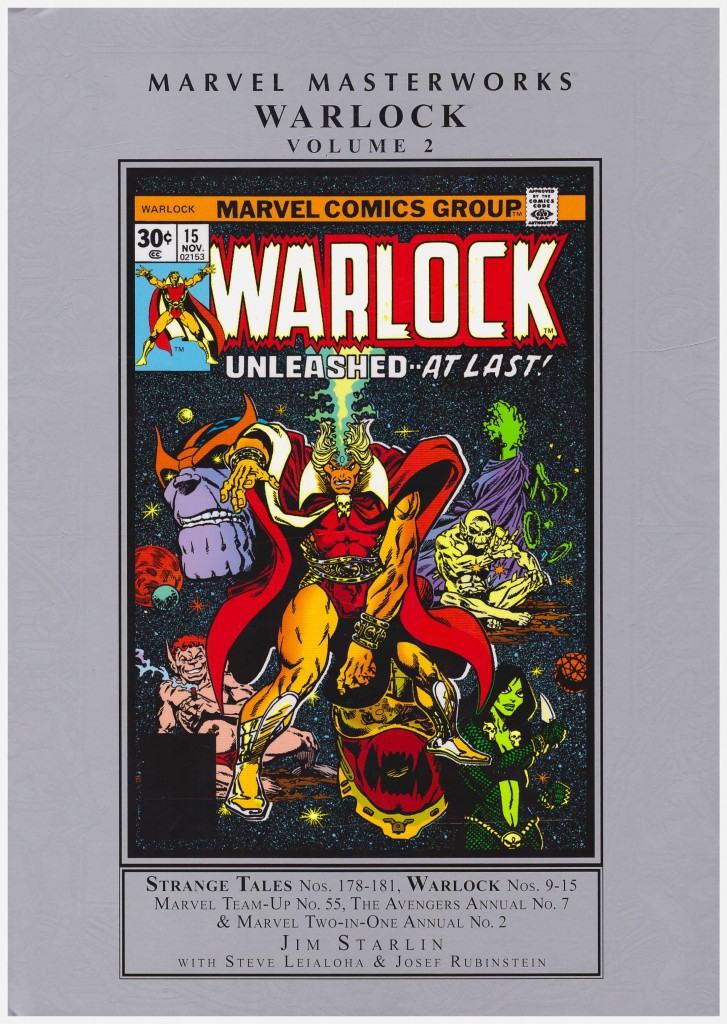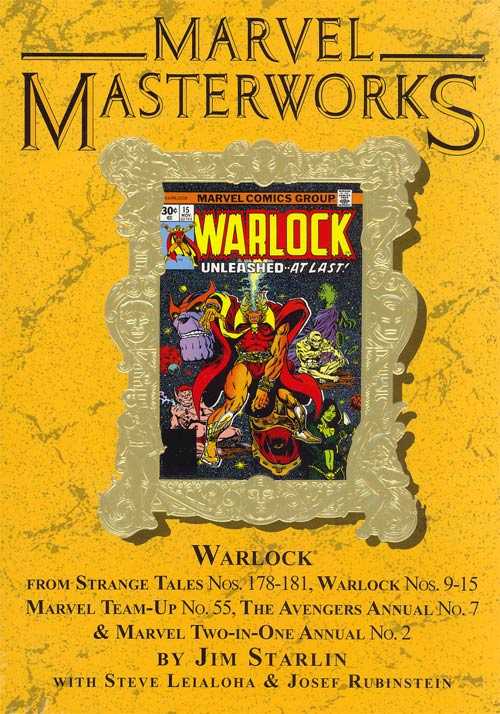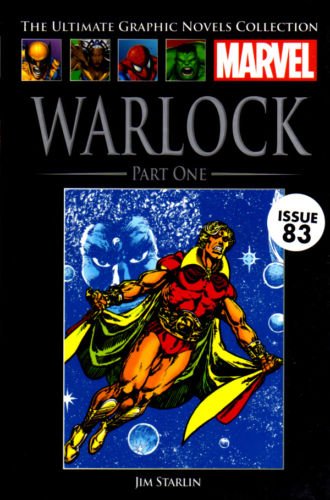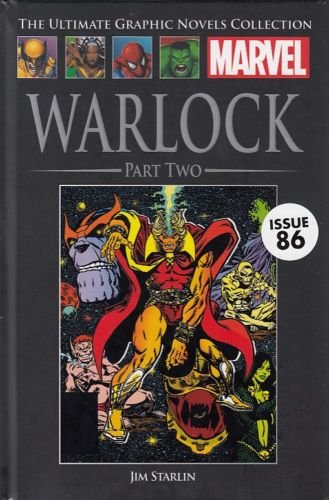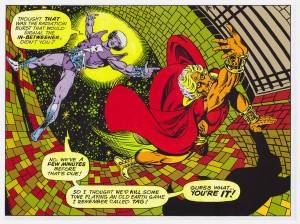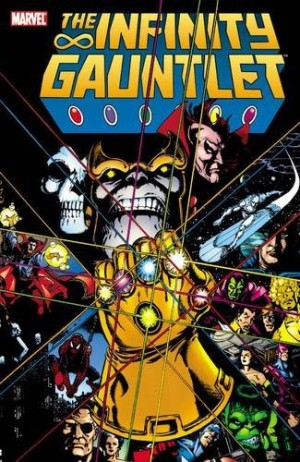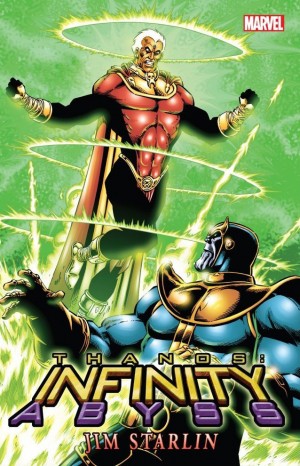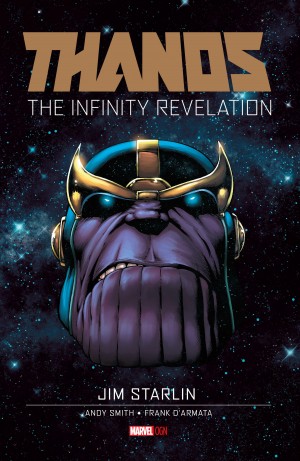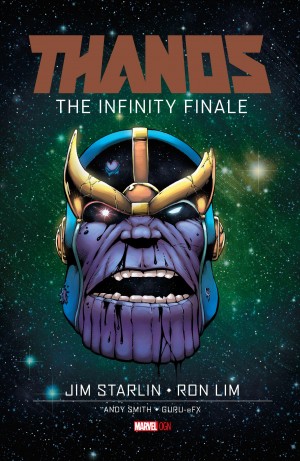Review by Frank Plowright
Jim Starlin’s Warlock is probably Marvel’s most enduring legacy of the 1970s. It’s a testament to both a talented creator being given leeway, and the creative freedom available in what was considered a marginal title. The good news is that it’s still fit for purpose in the 21st century.
Starlin first dispatched Warlock deep into the universe, then grasped the religious theme of his earliest solo appearances and twisted it for the Universal Church of Truth, an intolerant and bigoted organisation proclaiming genocide for anything other than human-like beings. Twisting the knife, the church is headed by the Magus, Warlock as he would be in the future. As he realises this Warlock also discovers the soul gem affixed to his forehead has vampiric properties, useful in some circumstances and malevolent in others. In his opening chapters Starlin sets a course for Warlock where only one action can prevent what he becomes. The extraordinary surprise is that he delivered that, and it occurs twice within the book, with well conceived dialogue re-shaping perceptions the second time around.
Starlin also really delivered with his art, channelling Steve Ditko and Gil Kane, and creating a universe where, humans apart, no two beings looked the same. An early decision was to replace Warlock’s gaudy costume with something more dignified, and his shots of Warlock flying through space populated by dozens of planets still impress. When Starlin could no longer remain a one man band, Steve Leialoha put in a shift far beyond the inking he’s credited for. Together they stretch Ditko’s 1960s visions of other-worldliness, twisting space and reality for unconventional and memorable visual distortions.
As much he railed against established authority as defined by the church, Starlin resented any form of editorial interference, and delivered a heavy-handed satire of how he viewed Marvel at the time, resulting in one of his weaker stories. With the Magus dealt with, two other major threats occupy the remainder of the book. One is the mad God Thanos, who worships death as a physical entity, but little mentioned and stunningly imaginative, is the Star Thief, who can obliterate worlds in an instant. His identity is well-conceived, and he’s astutely represented by Starlin as a facial pictogram spread across the stars.
The pre-occupations with death, suicide and other morbid undertones could make Warlock sound the miserablist’s bible, which is far from accurate. Starlin’s humour manifests in the art, the credits and primarily in Warlock’s companion Pip, a troll. Given his base nature, it’s perhaps inappropriate that he was originally conceived as Starlin’s visual homage to Jack Kirby. No other similarities should be inferred. In the closing chapters Starlin threw in Spider-Man, the Avengers and the Thing to construct as fine a superhero epic as any of the era.
Warlock may be Starlin’s legacy to Marvel, but of greater commercial value is his introduction of alien female assassin Gamora, now of the Guardians of the Galaxy comic and film. Her fatal allure is established immediately, and she’s an essential part of this story.
This collection includes welcome bonus material. There’s a fine introduction from Jon Cooke, and reproductions of Al Weiss’ sketched layouts for a story that never saw print. There’s also a teaming of Warlock with Spider-Man, writer Bill Mantlo noticing the similarity between Warlock’s soul gem and similar adornment worn by the Stranger. Starlin would seize upon this concept years later with Infinity Gauntlet. Otherwise, though, despite John Byrne’s decent art, Mantlo’s story lags way behind even the weakest Starlin material.
This is combined with Volume 1 as Adam Warlock Omnibus.
